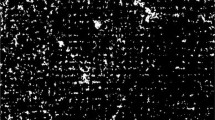Abstract.
Geographic entities are represented in vector GIS as geometric objects with definite position and sharp, zero or one-dimensional, boundaries. This representation ignores, and may in fact misrepresent, the underlying properties of many geographic features. This paper considers a binary classification scheme for ill-defined edges recently suggested by Couclelis (1996). Three initial perspectives of edge indeterminacy are considered for woodland polygons, namely functionally defined, using Hamming distances of the indeterminacy properties, and using the weighted trace of the connectivity matrix that defines the simplicial complex created from the indeterminacy relationships among the woodland polygons and their adjacent polygons. Finally, an analysis of the relationships created by the binary coding is carried out by examining more closely the connectivity structure of the simplicial complexes. The usefulness of the approach is discussed in the context of woodland habitat.
Similar content being viewed by others
Author information
Authors and Affiliations
Additional information
Received: 20 March 1999/Accepted: 7 September 1999
Rights and permissions
About this article
Cite this article
Roberts, S., Hall, G. & Calamai, P. Assessing polygon edge integrity. J Geograph Syst 3, 87–105 (2001). https://doi.org/10.1007/PL00011469
Issue Date:
DOI: https://doi.org/10.1007/PL00011469




